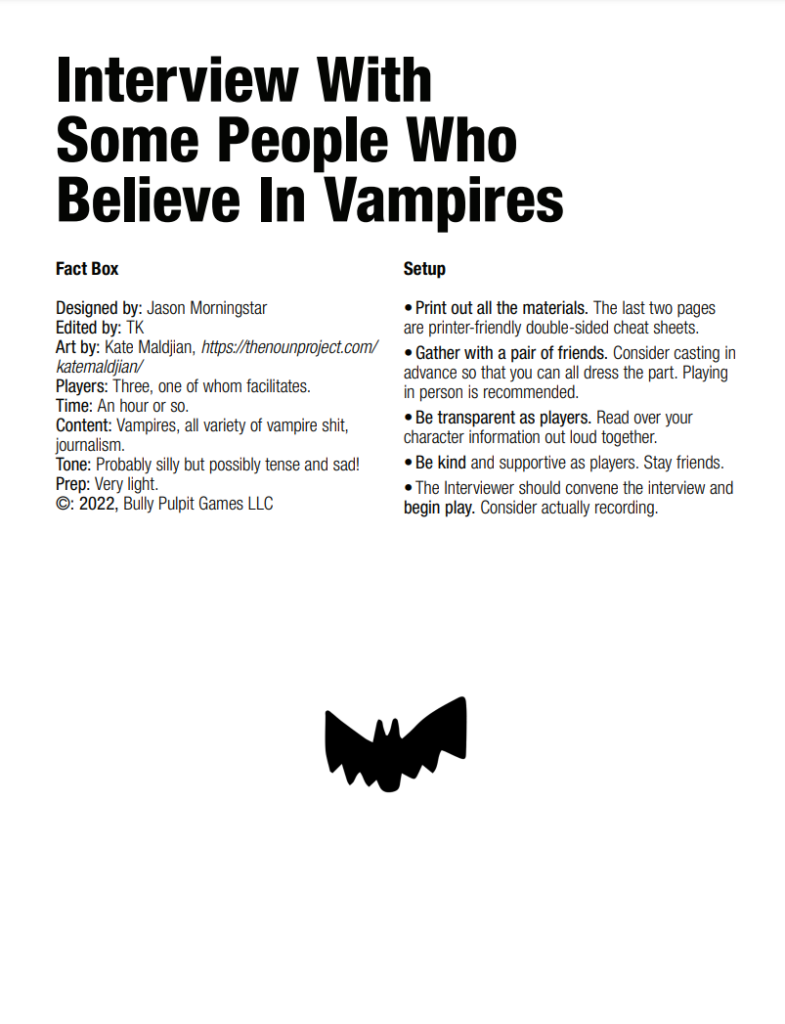In my A Game Per Year project, my goal has been to read one roleplaying game corebook for every year they’ve been published. However, I soon started to feel that it was hard to decipher how the games were really meant to be played. For this reason, I decided to start a parallel project, An Adventure Per Year, to read one roleplaying adventure for each year they’ve been published.

Jason Morningstar’s Interview With Some People Who Believe In Vampires is a humorous (unless you play it seriously) take on the Interview With the Vampire novels, movie and tv show. It focuses on the core conceit of the interview: A journalist sitting down with a vampire and asking questions. It’s a one-scene game lasting approximately an hour and can be played entirely as in-game conversation.
There are three characters. The journalist does the interviewing, absolutely refusing to believe that vampires are real and treating the interviewees as fodder for a quirky article about unusual people. The vampire wants to keep the existence of vampires hidden but also explain what being a vampire is like. The vampire hunter wants to hide the crimes they’ve committed in the name of the hunt but also reveal the monstrous nature of their enemy.
Rounding out the package is a series of questions the journalist can ask. Examples are:
“Did you relate to vampires, as represented by vampire media, as a child? If so, what was your favorite book or film about vampires? What did it mean to you?”
“How do you feel about goths and the subculture that embraces themes of darkness, alienation, and hopelessness, like those poor kids in Dover Falls lost in what everyone is calling “The Vampire Freak Murders”?”
There’s a bit of narrative matter related to an incident in Dover Falls, giving players the option of improvising a bit of backstory around what happened. The framework presents the characters and their core conflict, as well as the context where they talk, but lets players do that they like with it.
The scenario is a nifty little piece of design, reminiscent of the kind of things you sometimes find as parts of a much larger Nordic larp.